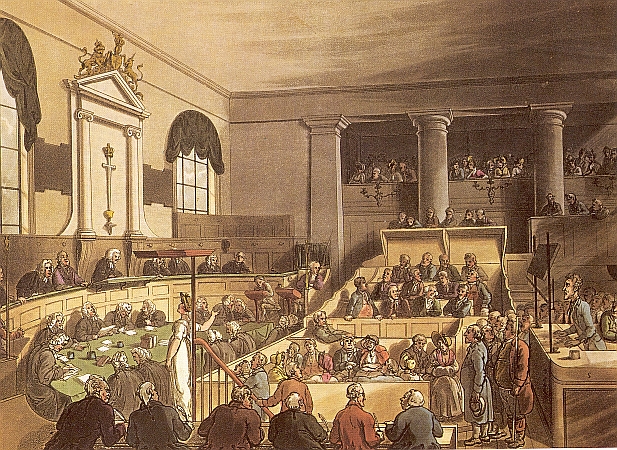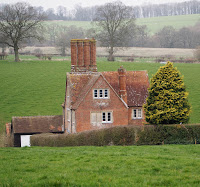The latest anthology in the Regency Romantics series is now published, containing six wonderful romances from myself and five fellow authors. My contribution to this edition is a brand new Regency romance, but I confess it is based on a very familiar theme.
Is there anyone who doesn't like the story of Cinderella? It is certainly one of my favourite fairy tales and a re-working seemed perfect for this winter collection. Waldo, Duke of Charingden is reluctant to marry so his family decide they will bring a selection of eligible ladies to the winter ball for him to choose from. Of course, nothing goes to plan, and Waldo becomes entangled with the very ineligible young woman staying at Dove Cottage. Here is a short excerpt for you. I hope you enjoy it!
Waldo has just stepped out of his drawing room for a breath of air....
And
there, dancing on the snow-covered grass, was the girl he had met in the woods
yesterday. She was so caught up with the dance that she did not see him and he
stood for a moment, watching her. The strains of the piano music floated out
into the still night air and she was turning and swaying, her cloak swirling
around her. Then she swung around and saw him on the terrace and she stopped,
her eyes widening in apprehension.
'Do
not run away,' he ordered, when she turned to flee. He ran lightly down the
steps and as he approached she slowly turned back towards him.
'I
beg your pardon, I meant no harm,' she said breathlessly.
'Who
are you?' he asked her. 'And tell me the truth this time. I mean no disrespect
to the Goodliffes but I doubt any relative of theirs ever learned to dance like
that.'
He
watched as she caught her full bottom lip between her teeth.
'You
are right, sir, I was given a good schooling, but I am an orphan, and my
circumstances are now such that I am forced to throw myself upon the Misses
Goodliffes' generosity. Miss Harriet was my nurse, you see, and I knew she
would not turn me away. However, to avoid any awkward explanations I decided to
remain here as their niece.'
'And
not content with frightening my horse I find you spying upon my guests,' he
said. 'You have no permission to collect sticks from here.'
'No.'
She hung her head. 'Your housekeeper sent over the remains of a game pie for
our dinner and I promised Miss Hannah that I would return the dish. The snow
and the moon made it light as day, so I thought I would bring it back tonight,
rather than wait for the morning. Then I heard the music.' She glanced up at
him. 'I love to dance,' she said simply. 'It is the one thing I have missed
most since I came to Dove Cottage. I did not think you would mind if I just
watched, through the window. But then, I just could not stop myself from
dancing, too.'
She
was looking so wistful that he came to a decision.
'Come
along.'
He
took her hand and she said in some alarm, 'What are you doing?'
'If
you want to dance, you shall come inside and join us.'
'No,
no, I cannot.' She dug in her heels and held back. 'Pray, your Grace, let me
go.'
'But
why? There is time for you to join in with one dance, at least.'
'No,
no, I pray you, sir, do not humiliate me so!'
The
anguished note in her voice made him stop.
'I
have no wish to upset you,' he said gently.
'I
should never have come here. Oh, your Grace, I beg your pardon.'
'Very
well, I shall not force you to come indoors if you do not wish it.' Looking
down into her face, pale and beautiful in the moonlight, a madness came over Waldo.
'But since you are here it is a pity to waste the music.' He pulled her closer.
'We shall tread a measure here, on the lawn.'
Distress
was replaced by suspicion and a sudden contraction of her brows.
'Now
you are making a May-game of me.'
Not
at all. I am deadly serious. Well?' He smiled, at his most charming. 'Listen,
another dance is starting. A waltz.' He took her hands. 'Come along, Clara,
dance with me.'
'This
is ridiculous.'
'Humour
me.'
He
was smiling down at her and Clara found it impossible to look away. His warm,
strong fingers were wrapped around her hands and when he moved she followed
him, dancing to the faint, sweet strains of the pianoforte that drifted out on
the still night air. He led her through the dance, moving with a lithe grace as
they glided across the lawn while the full moon hung like a silver lamp in the night
sky. Clara forgot that she was wearing a red flannel petticoat beneath her old
dimity gown, forgot the outdoor boots on her feet and the woollen cloak around
her shoulders. She felt like a princess, dressed in the finest silks, skipping
and twirling around the ballroom. The duke was still smiling and she found
herself smiling too, laughing aloud as the joy of the music swelled within her.
He lifted her hands high for the final rotation but at that moment a dip in the
lawn caught Clara unawares. She stumbled and would have fallen if the duke had
not caught her in his arms and pulled her against the hard wall of his chest.
She
laughed up at him, breathing in the mixture of crisp, cold air, freshly
laundered linen and a spicy rich scent. Then the glow in his eyes deepened and she
could not breathe at all. She felt hot, giddy. Her heart was beating so hard
she felt sure he must hear it. When he lowered his head she did not draw back,
instead she turned her face up to meet him, her lips slightly parted. His kiss
was soft, gentle as a breeze, but it sent a bolt of excitement zinging through
to her core and she found herself reaching up, pushing up on her toes to
prolong the moment.
When
he ended the kiss and raised his head, she felt bereft. He was gazing down at
her, a faint, puzzled frown creasing his brow and suddenly the chill night air
rushed in, bringing her back to the reality of her situation. The duke was
clearly ashamed of what he had done, disgusted with himself for kissing someone
he saw as little better than a servant. And she had kissed him back! No
respectable young lady would ever do such a thing. Tears were threatening. She
must leave, before she made even more of a fool of herself.
She
stepped away from him.
'Oh,
I beg your pardon.'
Her
anguished whisper hung on the night air.
'Clara,
I – '
As he
reached out for her she whisked herself out of reach, turned and fled.
***
Melinda Hammond
www.melindahammond.com
Candlelight Courtships is available now for you to enjoy from Amazon, with six spell-binding romances from Elizabeth Bailey, Monica Fairview, Amanda Grange, Fenella J Miller, Wendy Soliman and Melinda Hammond!

































